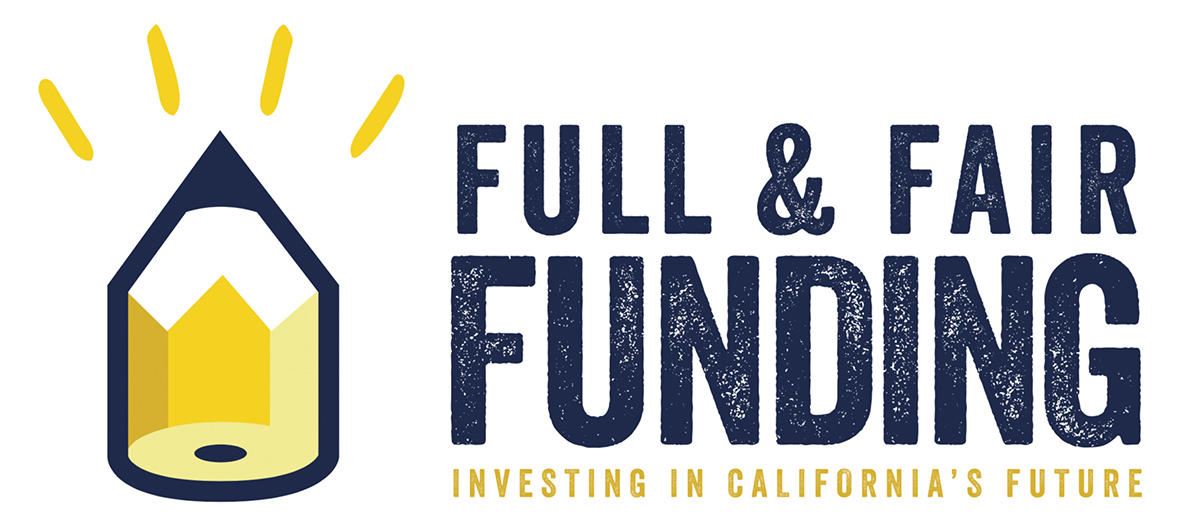
legal insights
BY MIKE AMBROSE
Protecting existing school funding while fighting for Full and Fair Funding
ull and Fair Funding is crucial for student success, and research continues to demonstrate that increasing funding to education makes an important and lasting impact on students, particularly for students in high-need and low-income schools1. Nonetheless, despite boasting the fifth-largest economy in the world and the highest gross domestic product of any state, California sits near the bottom nationally in nearly every significant measure of school funding and school staffing. Even with improvements to funding levels in recent years, California remains well behind most of the country. Adjusted for cost of living, California ranks just 41st in per-pupil funding.
California school funding is further limited by Proposition 13, enacted in 1978, which in part prohibits school districts from raising local property tax rates, forcing California schools to rely more on state funding than schools in other states. As a result, schools in California suffer disproportionally from underinvestment from the state.
A 2015 CSBA report on education funding, California’s Challenge: Adequately Funding Education in the 21st Century, found that K-12 education in the state was underfunded by $22 billion to $42 billion2. The recently published Getting Down to Facts II report found that an additional $22.1 billion would have been necessary to ensure all students had the opportunity to meet the state’s education goals in the 2016–17 school year3.
California education is deeply in need of additional resources.
CSBA litigation
CSBA and its Education Legal Alliance have made significant efforts through the courts to increase school funding, and to at least protect the currently mandated level of funding.
In 2010, CSBA and its ELA filed a lawsuit, Robles-Wong v. California, along with other associations, school districts and approximately 60 individual students and families, arguing that California’s school finance system fails to provide all students access to an education that meets their fundamental right to education. On Aug. 22, 2016, in a 4-3 vote, the California Supreme Court unfortunately declined to review the appellate court’s decision that found that there is no state constitutional guarantee to a certain level of education quality or education funding, although the justices recognized the need for additional school funding. Supreme Court Justice Liu, in his dissenting statement, noted that the “test scores of California students, on average and disaggregated by subgroups, are among the lowest in the nation, as measured by the federally administered National Assessment of Educational Progress.”
While pushing for the Full and Fair Funding that schools need, CSBA and its ELA have simultaneously fought to ensure that school districts receive at least the mandated level of funding under current law.
In CSBA v. California, CSBA and its ELA sued the State over its failure to fully pay the mandate obligations owed to school districts, when the State created a new series of statutory changes designed to eliminate payment on millions of dollars in annual mandate obligation payments (and in theory most education mandates going forward) through a “redetermination” process of going back and retroactively determining that something was not a mandate, and by identifying state funding already allocated to districts as “offsetting revenues” rather than new or additional funds. These practices violate California’s constitution, which dictates that whenever the legislature mandates a new program or higher level of service on any local government, including a school district, the State must provide an allocation of funds to reimburse that local government for the cost. The case is currently before the California Supreme Court.
In CSBA v. Cohen, CSBA and its ELA filed a lawsuit against the State in 2015, challenging its unconstitutional manipulation of the Proposition 98 minimum funding guarantee. State spending on childcare had always been included within the calculations of the Prop 98 guarantee. In 2011, however, the State moved most of the funding for childcare outside of Prop 98 for state budget purposes. In making this change, the State readjusted or “rebenched” the minimum guarantee to reflect the removal of childcare from within Prop 98. In 2015, the State added some childcare spending back into Prop 98, but did not rebench the minimum guarantee calculation higher to reflect this additional education expense — effectively lowering the amount of money education received. CSBA’s lawsuit did not object to the inclusion of childcare spending in Prop 98, but rather to the state’s failure to increase the minimum guarantee to education to account for this change. The case is currently before the Court of Appeal.
In a second case titled CSBA v. Cohen, CSBA and its ELA filed a lawsuit earlier this year in August, challenging provisions of California’s 2018–19 state budget that allow the state to manipulate the Prop 98 minimum funding guarantee. Prop 98 created constitutional rules to determine the annual funding level for public education and ensure a stable and predictable source of funding that grows with the economy and state General Fund revenues. Changes to the 2018–19 budget would allow the state to reduce education funding in future years by up to 1 percent of the prior year’s Prop 98 guarantee. Based on the current year’s budget numbers, these statutory changes could lower school funding in future years by as much as $784 million. This accounting change set forth in the challenged provisions would allow the state to provide less than the constitutionally obligated minimum funding guarantee in future years.

What else can be done?
Even if CSBA and its ELA are successful in protecting the currently mandated level of education funding, California schools will remain woefully underfunded. More than 500 school districts and county offices of education have already signed a resolution telling the California Legislature to raise funding for California public schools to the national average by 2020 and to the average of the top 10 states by 2025. The resolution is available for all local educational agencies at www.fullandfairfunding.org. The site also hosts a petition for individuals to sign. Legal action to protect existing school funding is and likely will continue to be important for K-12 education, but in order to achieve Full and Fair Funding for all California students, voters will need to choose to make the crucial commitment to our students and schools.
Endnotes
- See, e.g., Jackson, C. K., Johnson, R. C., & Persico, C. (2015). The effects of school spending on educational and economic outcomes: Evidence from school finance reforms (No. w20847). National Bureau of Economic Research.
- See the report at www.csba.org/GovernanceAndPolicyResources/ResearchAndPolicyBriefs.
- See www.gettingdowntofacts.com/research-briefs.